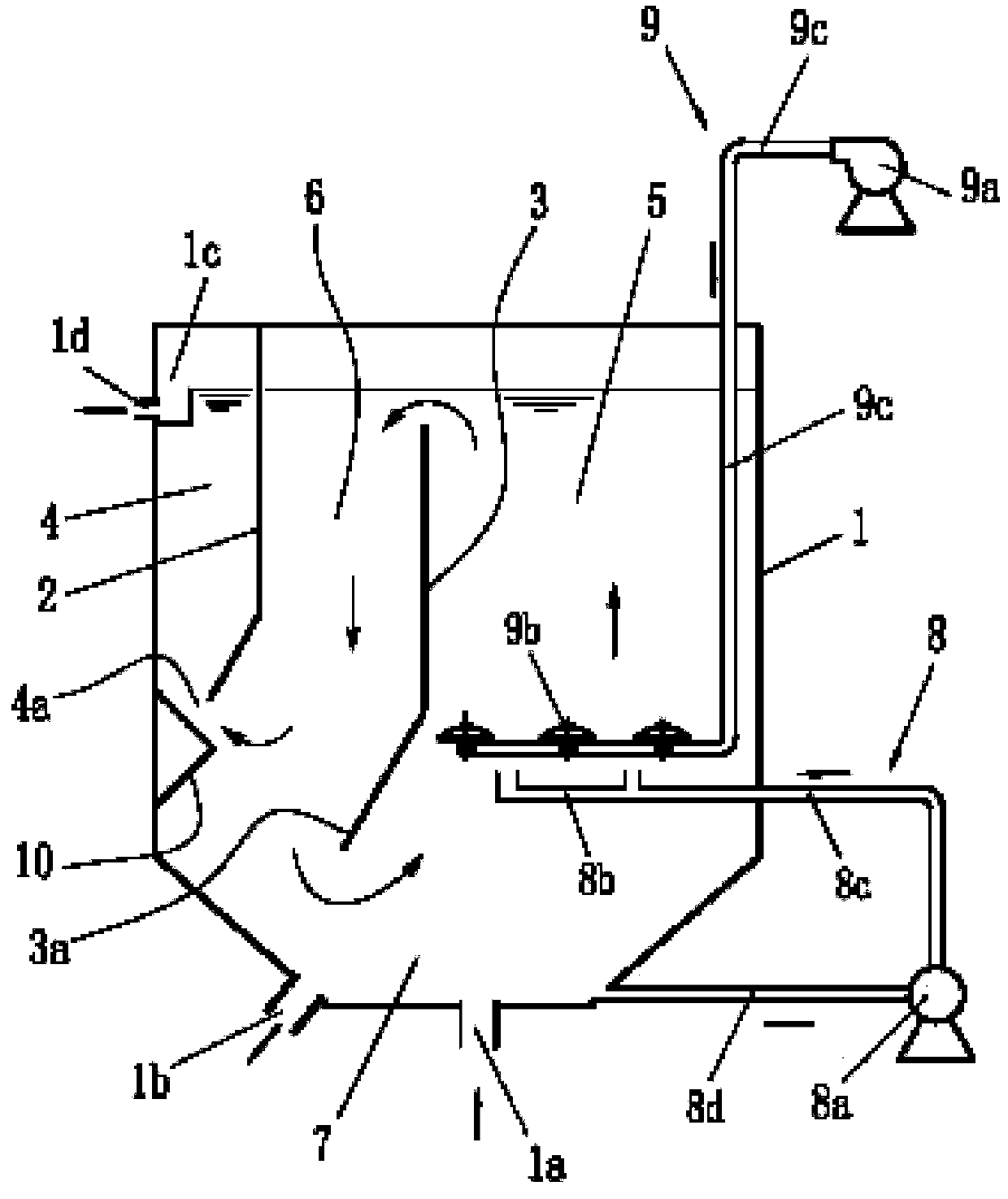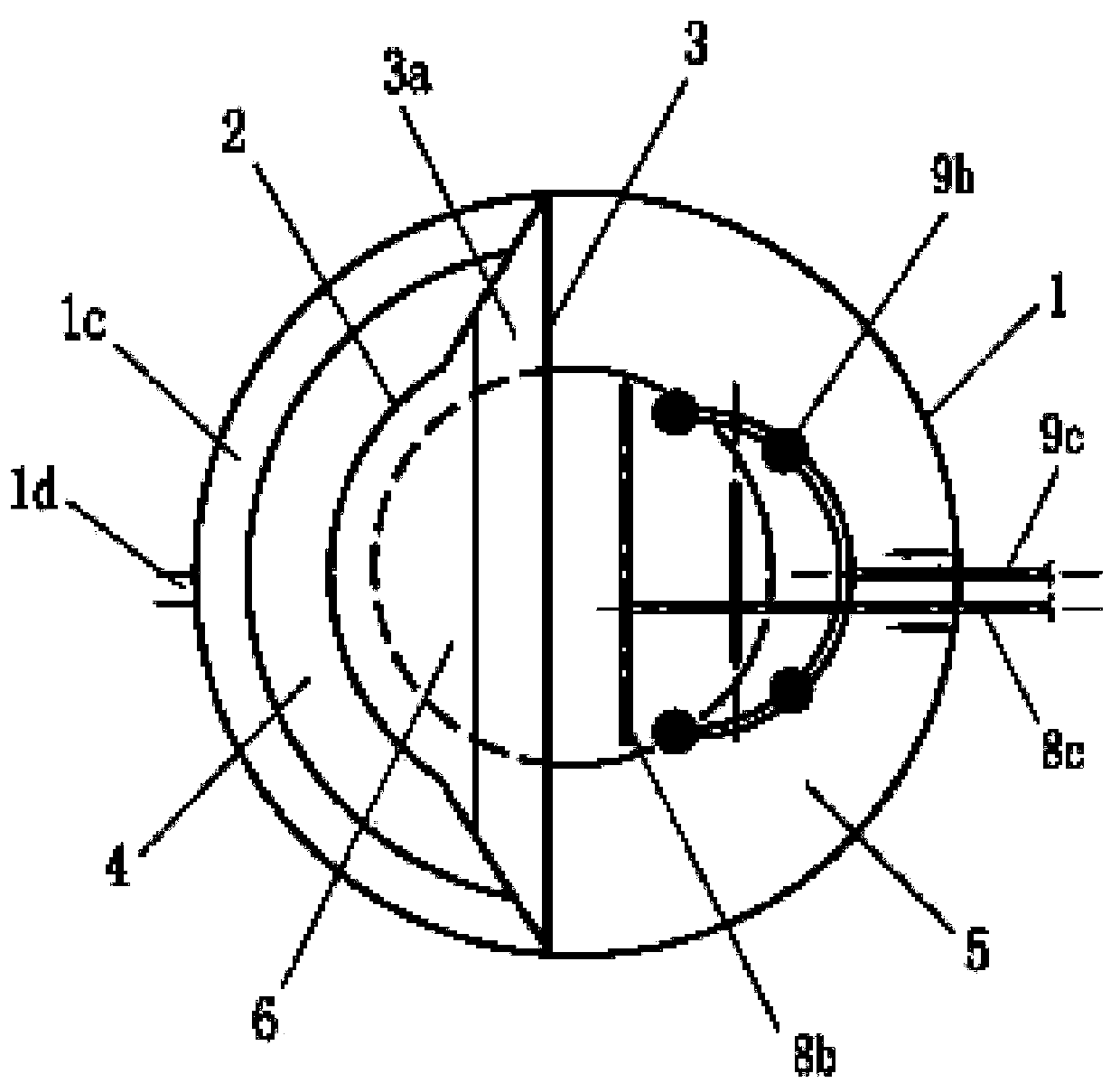Sewage biological denitrification and dephosphorization device
A technology for denitrification, phosphorus removal, and biological sewage, which is applied in biological treatment devices, water pollutants, biological water/sewage treatment, etc. effect, effect of improving shock load resistance
- Summary
- Abstract
- Description
- Claims
- Application Information
AI Technical Summary
Problems solved by technology
Method used
Image
Examples
Embodiment Construction
[0031] Referring to the accompanying drawings, the present invention includes a casing 1 of a vertical cylinder; the inner cavity of the casing 1 is provided with an outer vertical plate 2 and an inner vertical plate 3; the outer vertical plate 2 and the casing A mud-water separation zone 4 located in the middle and upper part of the housing is formed between the walls, and the upper part of the mud-water separation zone 4 communicates with the water outlet 1d; the inner vertical plate 3 divides the inner cavity of the housing 1 into two chambers, The chamber on one side of the inner vertical plate 3 is a water flow ascending channel 5, and the other side is a water flow descending channel 6, and the upper and lower ends of the water flow ascending channel 5 communicate with the upper and lower parts of the water flow descending channel 6 respectively, that is, in the shell A water circulation channel is formed in the body 1, and the inlet 4a of the mud-water separation area 4 ...
PUM
 Login to View More
Login to View More Abstract
Description
Claims
Application Information
 Login to View More
Login to View More - R&D
- Intellectual Property
- Life Sciences
- Materials
- Tech Scout
- Unparalleled Data Quality
- Higher Quality Content
- 60% Fewer Hallucinations
Browse by: Latest US Patents, China's latest patents, Technical Efficacy Thesaurus, Application Domain, Technology Topic, Popular Technical Reports.
© 2025 PatSnap. All rights reserved.Legal|Privacy policy|Modern Slavery Act Transparency Statement|Sitemap|About US| Contact US: help@patsnap.com



